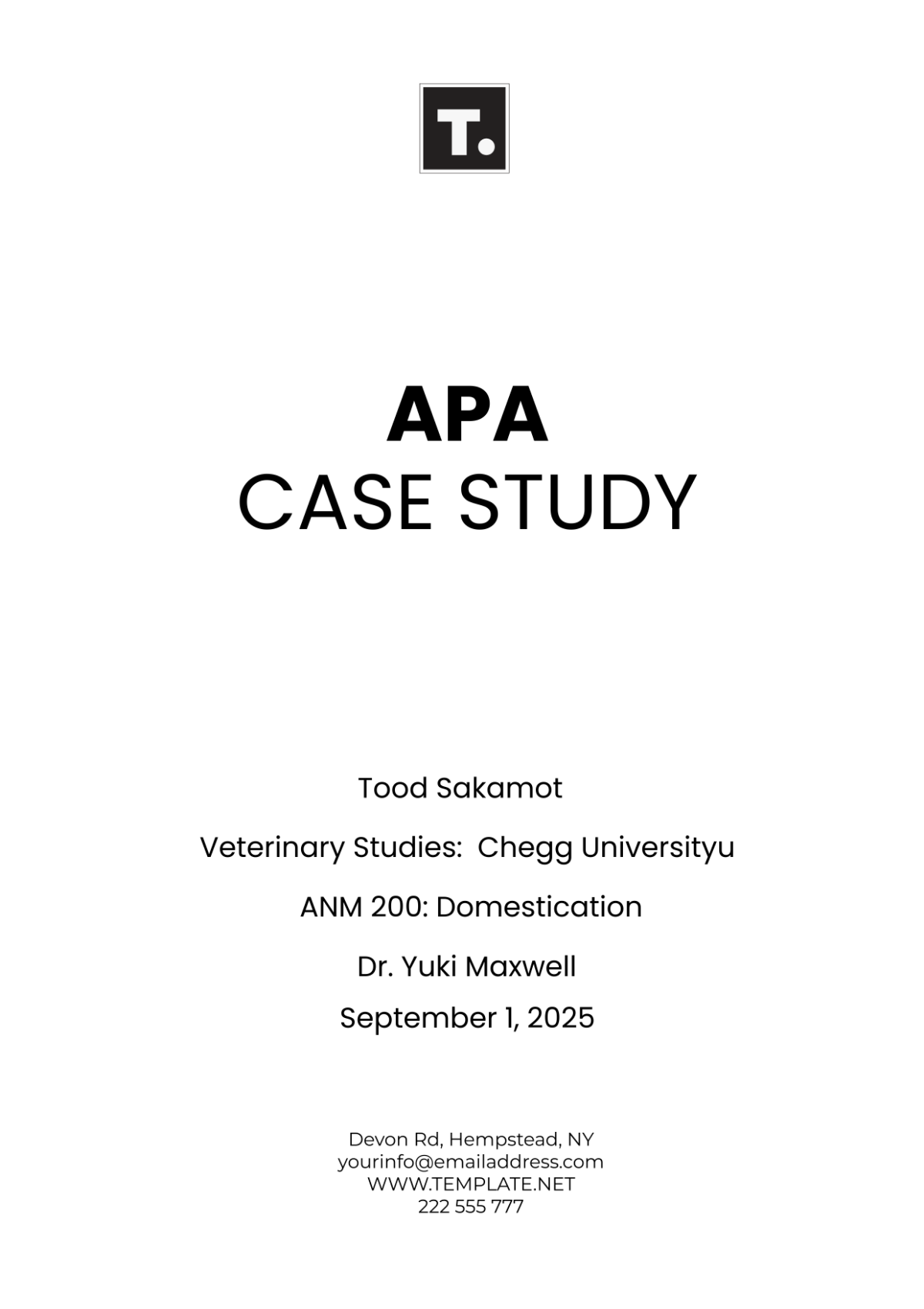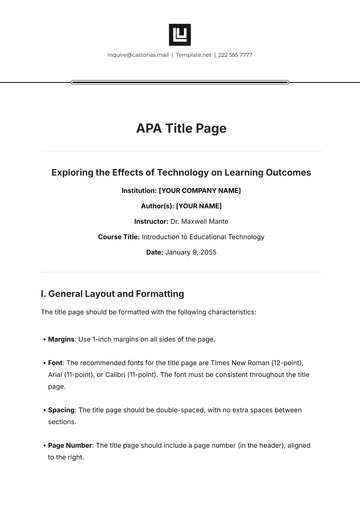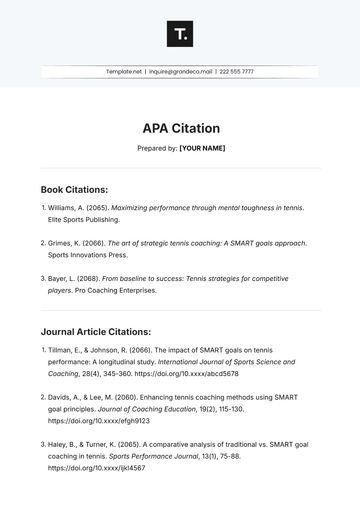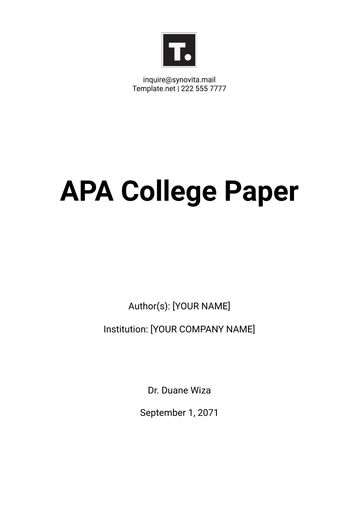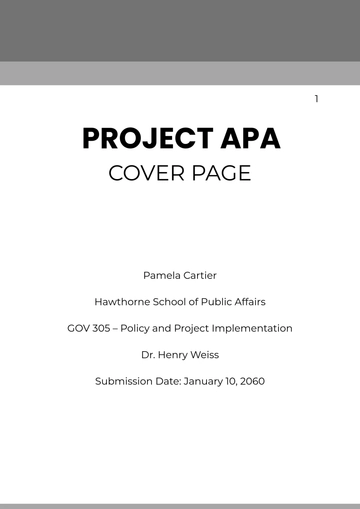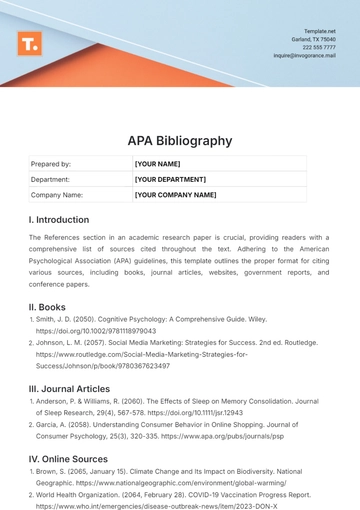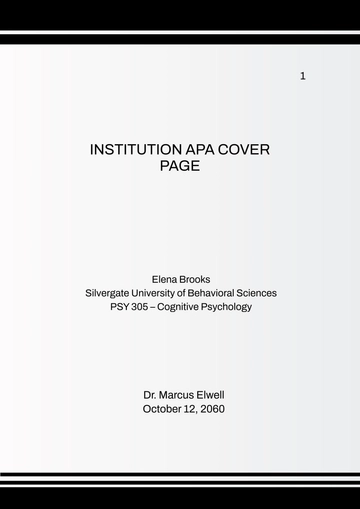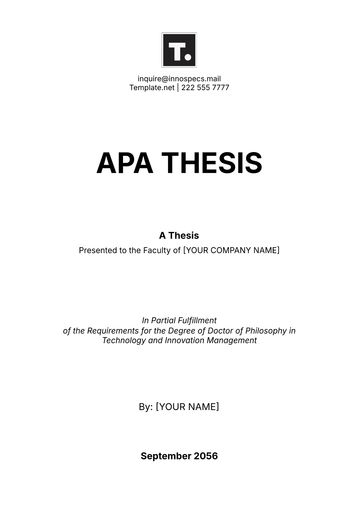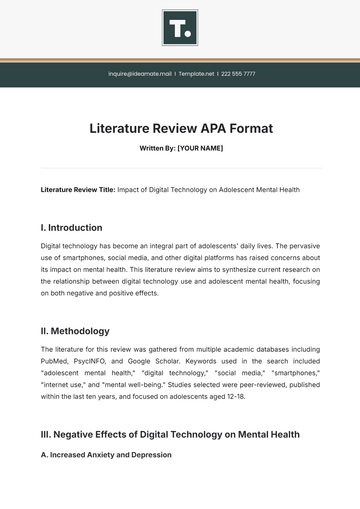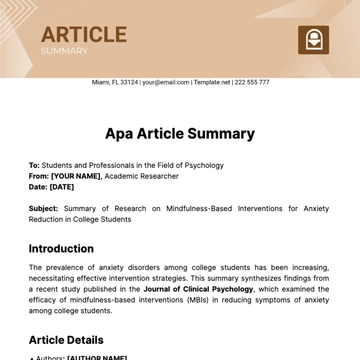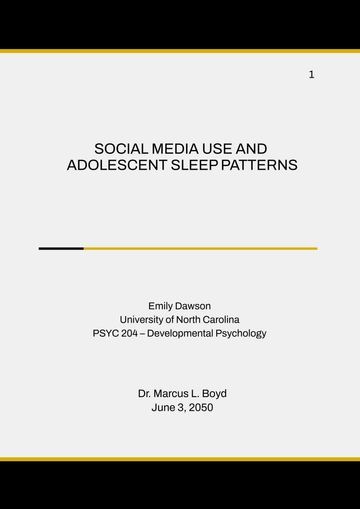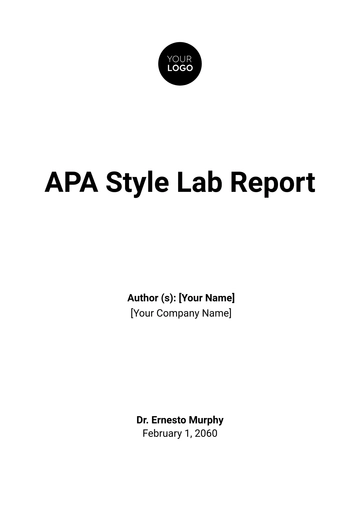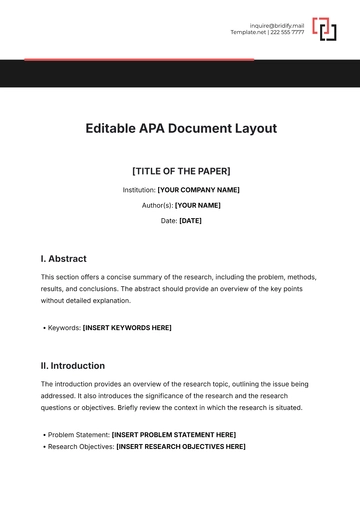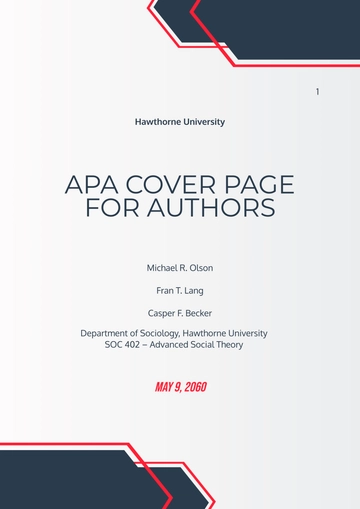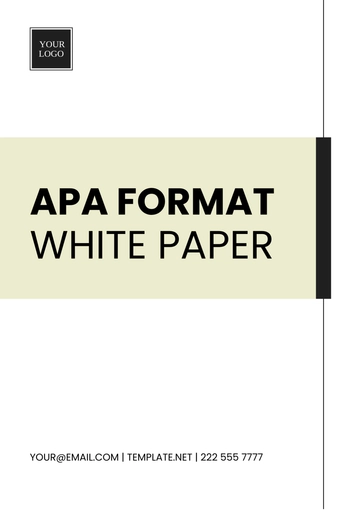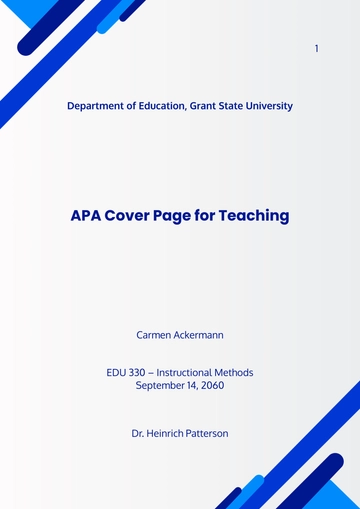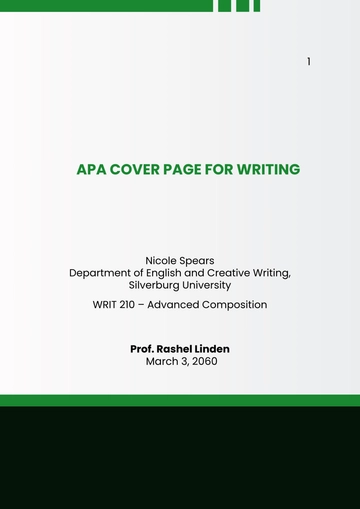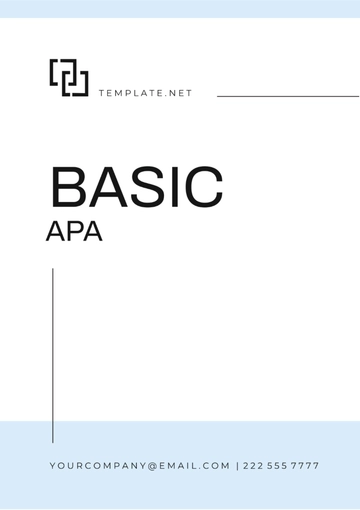APA Format Case Study
I. Executive Summary
This case study investigates the effectiveness of Cognitive Behavioral Therapy (CBT) in alleviating symptoms of anxiety disorders among adult participants. The study examines the outcomes of a 12-week CBT intervention, focusing on the reduction of anxiety symptoms and improvement in overall well-being.
II. Introduction
A. Background
Anxiety disorders are prevalent mental health conditions characterized by excessive worry, fear, and physiological arousal. CBT has emerged as a leading evidence-based treatment for various anxiety disorders due to its focus on modifying maladaptive thoughts and behaviors.
B. Objectives
III. Methodology
A. Participants
The study included 30 adult participants diagnosed with various anxiety disorders, aged between 25 and 45.
Participants were recruited from [YOUR COMPANY NAME], following diagnostic assessment by licensed psychologists.
B. Data Collection
Data was collected through structured interviews, self-report measures, and behavioral observations.
Ethical approval was obtained from the Institutional Review Board (IRB) before data collection.
C. Data Analysis
IV. Case Description
A. Case Presentation
Participant Emie Howell, a 32-year-old female diagnosed with Generalized Anxiety Disorder (GAD), presented with symptoms of excessive worry, restlessness, and sleep disturbances.
History revealed the onset of symptoms during adolescence, exacerbated by life stressors and interpersonal conflicts.
B. Diagnostic Assessment
Diagnostic assessment confirmed criteria for GAD based on DSM-5 criteria.
The severity of anxiety symptoms was assessed using standardized measures, revealing moderate to severe levels of anxiety.
V. Intervention
A. Treatment Plan
Participant engaged in 12 weekly sessions of individual CBT, focusing on cognitive restructuring and relaxation techniques.
Homework assignments were given to reinforce learned skills and promote generalization to daily life.
B. Progress Monitoring
VI. Outcome
A. Results
Post-intervention assessments revealed significant reductions in anxiety symptoms, with Participants reporting decreased worry and improved coping skills.
Behavioral observations indicated increased engagement in social activities and decreased avoidance behaviors.
B. Discussion
The findings support the efficacy of CBT in reducing symptoms of GAD and improving overall functioning.
Limitations include the small sample size and reliance on self-report measures, warranting caution in generalizing results.
VII. Conclusion
This case study demonstrates the promising outcomes of CBT in treating anxiety disorders, underscoring its value as a first-line intervention. Further research with larger samples and longer follow-up periods is warranted to validate these findings.
VIII. References
Beck, A. T., & Emery, G. (2050). Anxiety disorders and phobias: A cognitive perspective. Basic Books.
Hofmann, S. G., Asnaani, A., Vonk, I. J., Sawyer, A. T., & Fang, A. (2052). The efficacy of cognitive-behavioral therapy: A review of meta-analyses. Cognitive Therapy and Research, 36(5), 427–440.
Case Study Templates @ Template.net
